🍚 Rice
Package of practices for cultivation of rice and other important concepts and facts.
Basics

- Botanical name:
Oryza sativaAFO 2021 - Family:
Poaceae(Gramineae) - Rice is the
most important crop of India, occupies23.3per cent of gross cropped area of the country. - Rice contributes
43 per centof total food grain production and 46 per cent of total cereal production. - Only
10%rice is grown out of Asia.
Rice Growing Regions
- North-Eastern Region: Assam and North eastern states.
- Eastern Region: Bihar, Chhattisgarh, Madhya Pradesh, Orissa, Eastern UP and WB
- Northern Region: Haryana, Punjab, Western Uttar Pradesh, Uttrakhand, HP and J & K.
- Western Region: Rajasthan, Gujarat and Maharashtra.
- Southern Region: Andhra Pradesh, Karnataka, Kerala and Tamil Nadu.
World
- Area:
India(43.19 million ha 2016-17) > China > Indonesia - Production:
China (28%)>India (21.65%)> Indonesia - Highest Productivity:
Japan (58q/ha) - Major Rice importing countries (2015-16):
China(3.25 MT) > Saudi Arabia > Iraq - Export:
India>Thailand> Vietnam Indiahad the highest export volume of rice worldwide, at 15.5 million metric tons as of 2020-21.- India’s Major Destination to export of basmati rice:
Iran> Saudi Arabia > UAE - India’s Major Destination to export of non-basmati rice:
Nepal> Benin > Senegal - Import Policy: Import of seeds is restricted. Whereas import of rice for human consumption is permitted through State Trading Enterprises.
India
Riceis the largeststaple food crop of India.- Top 10 largest rice producing states in India in 2019, which contribute to 80% of total rice production.
- West Bengal
- Uttar Pradesh
- Andhra Pradesh
- Punjab
- Tamil Nadu
- Bihar
- Chhattisgarh
- Odisha
- Production of rice in India during 2020-21 was
122.27million tonnes. - Production:
West Bengal> Uttar Pradesh > Andhra Pradesh - Area:
Uttar Pradesh - Highest Productivity in India:
Punjab (55-60 q/ha); Average Productivity in India 20q/ha. - Productivity of rice is 2nd to wheat in 2016-17.
Climate
- Rice favours hot ☀️ and humid 💧 climate.

- For blooming: 26.5 to 29.5 °C.
- Rice is considered as a
self-pollinatedandshort-day crop. - Requirement of rainfall throughout growth period is
1000-1500 mm. - Water Requirement of irrigated wetland rice -
1500 mm - Rice is grown in three seasons in Eastern and Peninsular India because of uniformity in temperature.
- Clay loam soil with
slightly acidiccondition (pH 4-6) is best for cultivation of rice. - Normally, rice is grown at the spacing of 20 cm from row to row and 10 cm from plant to plant.
Season
- Three types of season for rice cultivation in India:
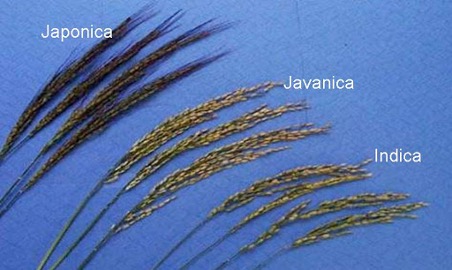
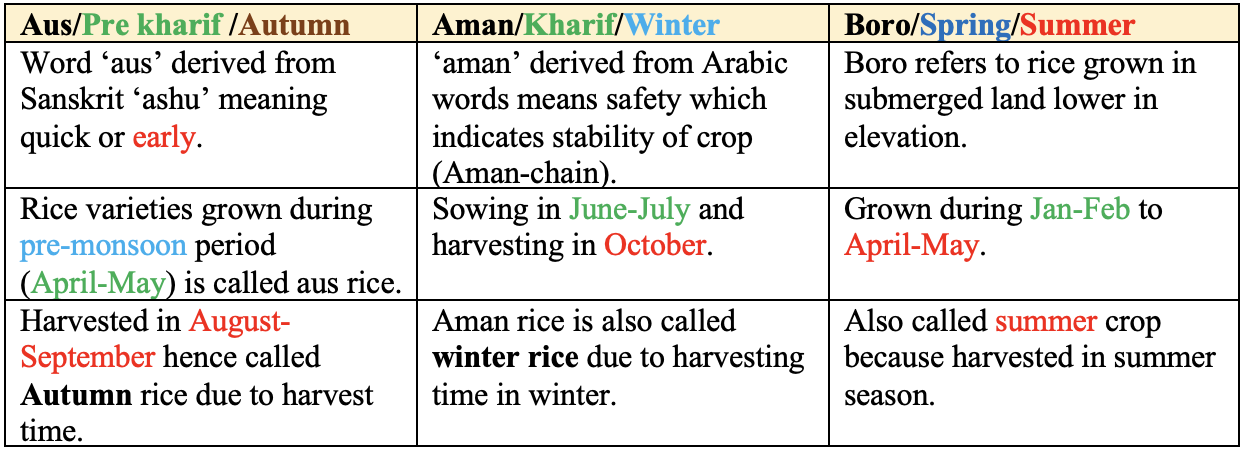
- Oryza has
24 spp.of which only twoOryza sativa&Oryza glaberrimaare cultivable and rest 22 spp. are wild type. Oryza sativa is grown in India and O. glaberima is cultivated in Africa. - Oryza sativa is believed to evolve from O. nivora.
- Rice is a
diploid (2n)crop has chromosome no. of24. - Origin:
South-East Asia - Rice contains about
70 per centcarbohydrate and6-7 per centprotein (Oryzein) content,2.5 %Fat. - Rice protein is rich in
lysine(4%). - Oryza sativa has three varietal types:

Morphology

- Rice inflorescence is called as
paniclewhich has6numbers of stamens. - Lemma and Palea together called as
Hull. - Stem of rice is called as
Culm.
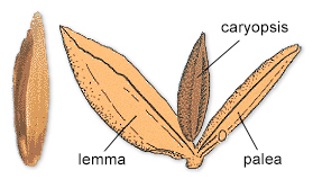
- Fruit of rice is
caryopsis. (All cereal and grasses)
Varieties
TN-1(Taichung Native) was developed after 2nd world war in Taiwan.- TN-1 =
Dee-geo-woo-gen(Dwarf & N-responsive) XTasai Yung Chung(Tall and Drought Resistance) - Dr. T.T. Chang brought TN-1, Dee-geo-woo-gen and I-geo-tze from Taiwan to IRRI, Manila.

IR-8was evolved by breederHenry BeachellatIRRI, Manila. One of the parents of IR-8 was Dee-geo-woo-gen.- IR-8 =
Dee-gee-woo-gen(fromChina) XPeta(fromIndonesia)
- Literally meaning of Dee-gee-woo-gen: Brown tipped short legged.
- First time in India,
TN-1(2kg in 1964-65) was introduced by G. V. Chalam (G.M. of NSG) from IRRI. Before this rice productivity was about2 q/ha. After this it reached upto 8 q/ha. - IR-8 was introduced in India in 1966 and IR-8 out yielded TN-1.
Jaya= T.N.- 1 (from Taiwan) X T-141 (Indian Variety), evolved byDr. Shastry, first rice variety is developed under India’s rice programme. It out yielded T.N.-1 & IR-8 both, hence calledMiracle Ricein India.
Dr. Shastry
Padmais the reverse cross product of the parent of Jaya.- i.e. Padma = T-141 X TN-1
Jagannath: Mutant Variety of T-141.Sahbhagi Dhan: New varieties of rice capable of withstanding drought.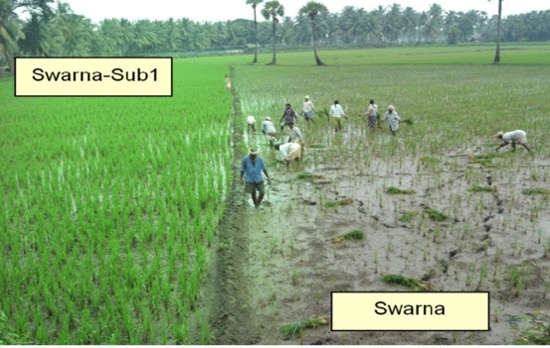
- Water submergence variety of rice - Swarna-Sub 1, can survive for 14 days under water.
Basmati Rice
Basmati 370,Basmati 385, 1121 (Extra-long grain variety)Pusa Basmati-1(Muchal):World’s firsthigh yielding dwarf variety under quality rice has been developed byIARIthroughconvergent breeding.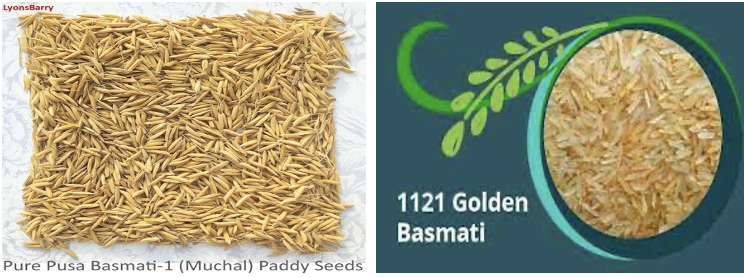
- Fragrant rice – that are derived from basmati stock but are
not true basmativarieties including PB-2 (also called Sugandha-2), PB-3 and RS-10. - A basmati rice grain contains 0.09 ppm of aromatic chemical that is 12 times more than non-basmati rice.
- Basmati rice has a typical pandan-like (Pandanus amaryllifolius leaf) flavor caused by the aroma compound 2-acetyl-1-pyrroline.
Non-Basmati Rice
Gobindbog: Cultivatd mostly in West Bengal and alloted G.I. tag for it piculiar characteristics like white, aromatic, sticky rice having sweet buttery flover. It derives its name from its usage as the principal ingredient in the preparation of the offerings to Govindaji, the family deity of the Setts of Kolkata.

Rice Varieties Suitable for Cultivation in Different Condition
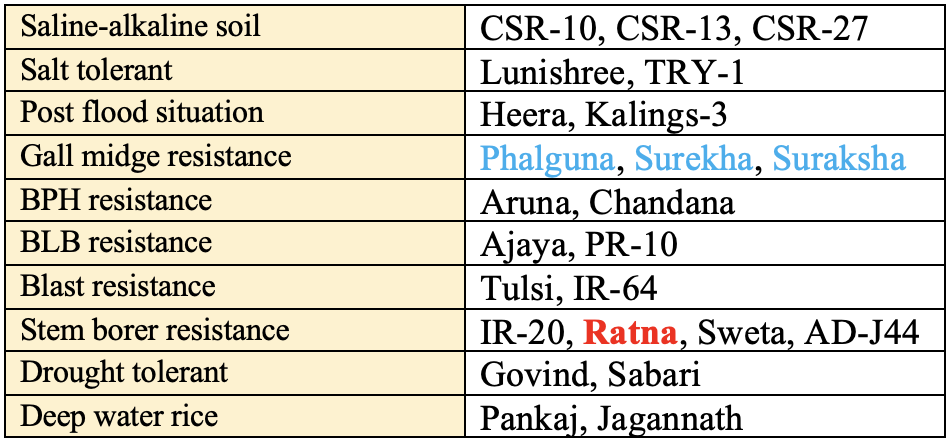
Types of Rice cultivation
- Transplanted 💧 puddled lowland rice
- Wet seeded 💧 puddled lowland rice
- Dry seeded ☀️ rainfed un-puddled lowland rice (Rainfed Rice)
Methods of Rice Cultivation
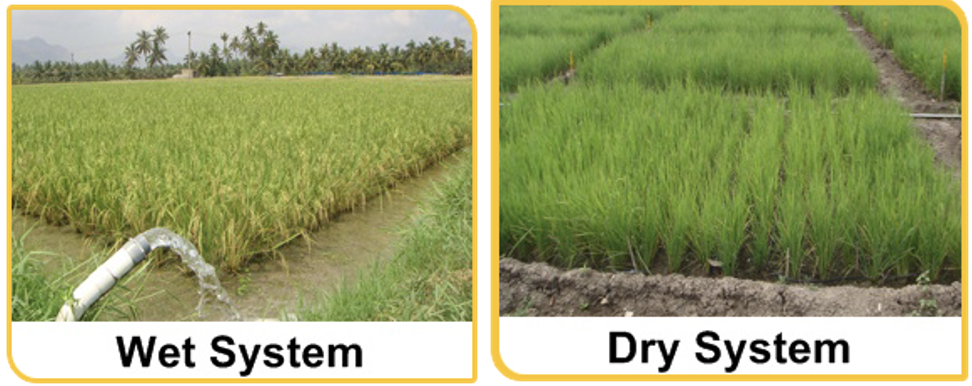
- Dry or Semi-dry upland Cultivation
- Broadcasting the seed
- Sowing the seed behind the plough or drilling.
- Wet or lowland Cultivation
- Major part of rice crop in India is grown under low land condition.
- Optimum depth of puddling is
5 cm. - Transplanting in puddled fields.
- Broadcasting sprouted seeds in puddled fields.
Types of Nursery in Rice
Nursery area required for transplanting in 1 ha (10,000 m2): Normally 10% 👉🏻 1000 m2 ( 1:10 )
- Rice Dry Bed: 1000 m2
- Rice Wet Bed: 1250-1500 m2
- SRI Method:
100m2 (1:100) - Dapog Method:
40m2 (1:250)
Dapog method of Rice
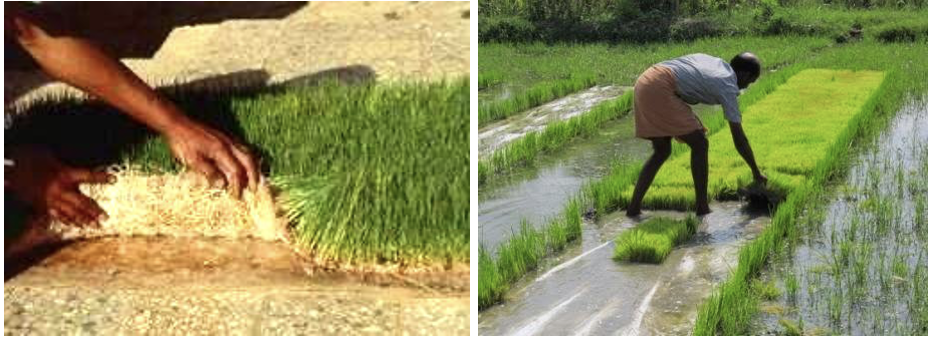
- Originated and commonly prevalent in
Philippines. - In this method, seedlings become ready for transplanting on 12th day.
- Rate for nursery sprouted seeds @
1.5-2kg/m2 or 50 times of test weight/m2 on wooden planks, trays, concrete floor seed bed covered with polythene sheet. - Seedlings from
1m2 are sufficient for200 – 250m2 field. (Seed rate: 2.5 times higher than other method). - Crop flowers days
earlierwhen rice is transplanted by this method.
Transplanting
- Ideal Age for transplanting: Seedling having 4 leaves, may be 3 leaves but in no case 5 leaves. Seedlings of 20-30 days in Kharif (Spacing 20 cm X 15 cm) and 30-35 days old in Rabi (Spacing 15 cm X 15 cm).
- Thumb Rule: 👍🏻 Age of transplanting is 1/4th of total duration of crop.

Spacing

- Paira and Utera cropping system are most practiced in Orissa, Bihar and Chhattisgarh.
- Most prominent cropping pattern of rice in India is
Rice-Wheat.
Nutrient Management
- Rice prefers nitrogen uptake in
Ammonicalform (NH4). Ammonium sulphateis the best fertilizer for top dressing in rice.- Best fertilizer as basal dose is
DAPfollowed by SSP. Ammonium polyphosphate, a new complex P-fertilizer is superior to both diammonium phosphate (DAP) and single super phosphate (SSP), especially, in acid clay loams.- The recommended dose of N, P and K for rice crop is
100,60and40kg ha–1.
- Highest nitrogen loss in rice field occurs due to
denitrificationprocess. - N2 loss in rice field can be reduced by placing the ammonical fertilizer (NH4+) in reduced zone and nitrate fertilizer (NO3-) in oxidized zone.
- In low land rice, fertilizer is applied in
reduced zoneonly. - Rice yields are generally lower in direct - seeded uplands due to high tiller mortality after maximum tillering phase.
- Zinc deficiency is a major problem in intensively cultivated and saline-sodic-soils. In normal or neutral soils apply ZnSO4 @ 40 kg/ha for every three crop seasons. In Saline-sodic soils initial application of ZnSO4 @ 100kg/ha to make allowance for high Zn-fixation, followed by normal application of Zn after 3 successive crop seasons has given higher grain yields.
- Use of gypsum @ 6 tonnes/ha for sodic soils with pH 9.5-9.7 rapidly brings exchangeable sodium from 70% to 50% in the very first season. A combination of gypsum (3 tonnes/ha) + green-manure (6 tonnes/ha) is equally effective in reclaiming saline alkali soils.
- Iron toxicity is the major problem to rice production in highly acid Ultisol, Oxisols and acid-sulphate soils. Varietal tolerance is only solution
Phalgunavariety exhibits some tolerance to Fe-toxicity.
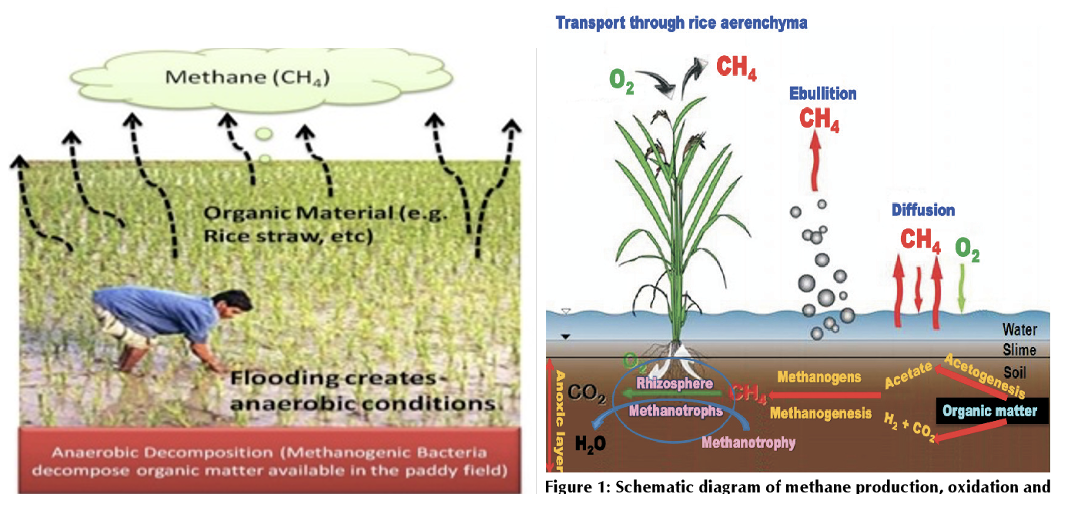
- Gas emitted from rice field is CH4 (
Methan).
Nitrogen Management in Rice
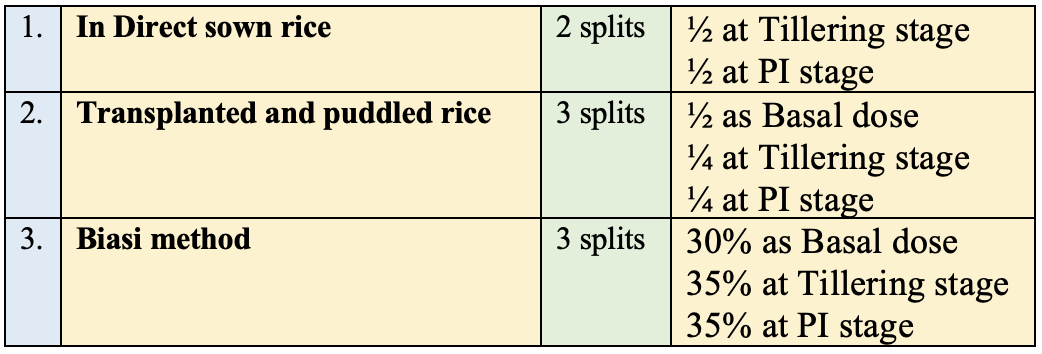
Azollais applied in the rice field for nitrogen fixation and enhance the organic matter in soil.Azospirrilliumis a nitrogen fixing bacterium found on root surface of rice.
Water Management
- Water requirement is
1400-1500 mm. - Rice crop requires
5 irrigationsfor its life cycle. - Rice field submergence in
5 cmdeep water during the reproductive and grain formation stage is beneficial. - The critical stages of rice for both fertilizer application and irrigation are
TilleringandPanicle Initiation (PI). - Rice crop has 5 Critical growth stages in respect of irrigation:
- Seedling
- Tillering
- Panicle Initiation (PI): Booting Stage: most critical stage for water critical stages.
- Flowering
- Dough/Maturity
- Rice crop is a
lowestwater use efficiency (WUE) andhighestwater consuming crop, which requires:5000 litreof water to produce 1 kg of yield under semi-aquatic conditions.2500 litreof water to produce 1 kg of yield under aerobic conditions.
- IW/CPE ratio of rice is 1.20.
Seed Rate
- Germination:
Hypogeal - Test weight (weight of
1000grains) =25 g
Weed Control
- Most dominated weed species in rice field is Echinochloa spp. (Wild Rice)
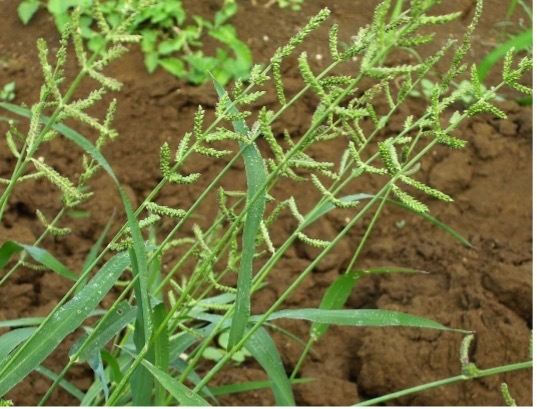
- Propanil (Stam F-34): @ 3 kg a.i. (8 lit) in 400-600 lit. water/ha at 6-8 days after transplanting (DAT) when weeds are in 1 to 3 leaf stage.
- Butachlor (Machete): @ 2 kg a.i./ha as pre-emergence.
- Fluchloralin (Basalin): Soil incorporated at the time of puddling or 1-3 DAT @ 1kg a.i./ha.
- Nitrofen (TOK-E-25): Pre emergence application @ 2 kg a.i./ha.
Harvesting
- The right stage for harvesting as commonly is when panicles turn into golden yellow and the grains contain about
20percent moisture. - The critical percentage of moisture for harvesting and storage of paddy is 15-20 per cent and
10-12per cent, respectively.
- Rice husk contains 15 to 18 percent
silica, therefore, it is a potent source of silica for the manufacture of silicates or in glass manufacture.
Parboiled Ricecontains vitaminB-12 (Cobalamine). (Otherwise lost during refining).- Parboiling involves partial boiling of the paddy before milling (with husk) in order to increase its nutritional value, to change the texture of cooked rice, and reduce the breakage in milling. Parboiling is done in three steps: Soaking, Steaming and Drying.
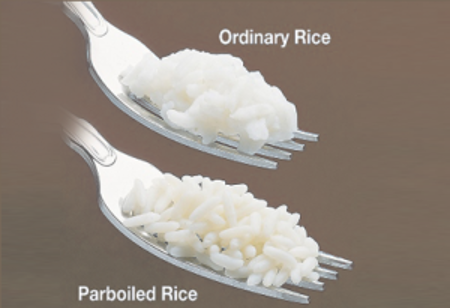
- Dehusked (unhusked) rice is also known as Brown rice.

- Harvest Index of rice is
0.45. (45%) - Hulling % =
66% - Rice (cleaned) is
2/3of paddy.- = (Weight of rice grain)/(Weight of paddy grain) X 100
- = (Wt. of hulled rice)/(Wt.of unhulled rice) X 100
- = (Wt. of rice without husk)/(Wt.of rice with husk) X 100
- Usuallu the average milling recovery/shelling percentage of rice is
60 per cent.
Oil content in Rice Bran

- Raw rice bran: 12-18 per cent
- Parboiled bran: 20-28 per cent
- De-oiled bran: 1-3 per cent
Red Rice

Iron rich ‘red rice’ is grown in Brahmaputra valley of Assam without using any chemical fertilizer. The rice variety is referred as ‘Bao-dhaan’, which is an integral part of Assamese food.
In a major boost to India’s rice export potential, the first consignment of ‘red rice’ was flagged off to the USA on 4th March, 2021.

Pests & Diseases
- Akiochi disease: caused by H2S toxicity.
- Khaira disease: caused by
Zndeficiency. - Montek disease: caused by rice
root nematode. - Ufra disease: caused by
nematode (Ditylenchus angustus) - White eye:
Fedeficiency. - Dead heart and white ear is caused by
yellow stem borerof rice. - Killer disease of rice is
Bacterial Leaf Blight (BLB)andTungro Virus.
Fluffy paddy soil
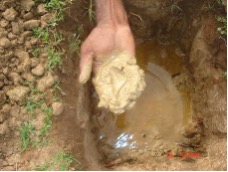
rice-rice-rice, the soil particles are always in a state of flux and the mechanical strength is lost leading to the fluffiness of soils.
Beushening/Biasi in Rice
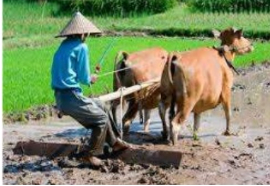
Chhattisgarh, Bihar and Orissa. Under this system, rice seeds are broadcasted in ploughed field immediately after the onset of monsoon and the standing crop is ploughed 4 to 6 times later when 4 to 5 cm water is standing in the field. The uprooted seedlings are transplanted after biasi which is called as Chalai gap filling.
Objectives of Biasi
- To control weeds
- To create semi-puddled conditions
- To arrest percolation loss of water and
- Adjust the plant population through chalai.
Hybrid Rice

-
In the last decade of
1970, hybrid rice was first developed by Chinese scientistYuan LongpingtheFather of Hybrid Riceby usingCytoplasmic Male Sterility (CMS)- Fertility restorer gene system. -
After China, in India, in 1994, first set of five hybrid rice varieties have been released for commercial cultivation. Out of these five hybrids, four varieties
APRH 1,APRH 2(Andhra),KRH 1(Karnataka),MGR-1(Tamil Nadu), have been released by A.P., Karnataka & T.N. -
After two years, another three hybrids— CNRH 1, KRH 3 and DRRH-1 have been released by West Bengal & Andhra Pradesh respectively.
-
PHB-71is the only hybrid rice which is released byprivate organization. -
Seed rate for hybrid rice is less which is
15 kg/hawith20 x 15 cmspacing.
Golden Rice

- Produced by combining genetic material from Daffodils, Ervinia vredivora, Agrobacterium tumifacience and Japonica rice by Professor
Ingo PotrykusandDr. Peter Beyer(Germany, 1999). - Purpose of golden rice is to provide a new, alternative intervention to combat
Vitamin A deficiency. Which is a major cause of blindness in children and can also lead to death due to infectious diseases such as measles. - Rice is naturally low in the pigment beta-carotene, which the body uses to make Vitamin A. Golden rice contains this, which is the reason for its golden colour.

System of Rice Intensification (SRI)

- A new system of rice intensification saves 5 things viz.
- Enhancing land/ Intensify the land use
- Increase water use efficiency: Save water (20-25 per cent) 👉🏻 1 kg seed production 👉🏻
1571liter water is required. - Increase production and decrease the cost. Labour saving (14 per cent)
- Increase crop productivity (20-45 per cent)
- Seed saving (70-80 per cent) 👉🏻 5-6 kg/ha
Leaf Colour Chart (LCC), a simple device for nitrogen management saves 15 kg N/ha in rice.Rotary/Cono weededis used for weeding in lowland rice.
- The first systematic work on SRI began at
TNAU, Tamil Nadu in 1993.
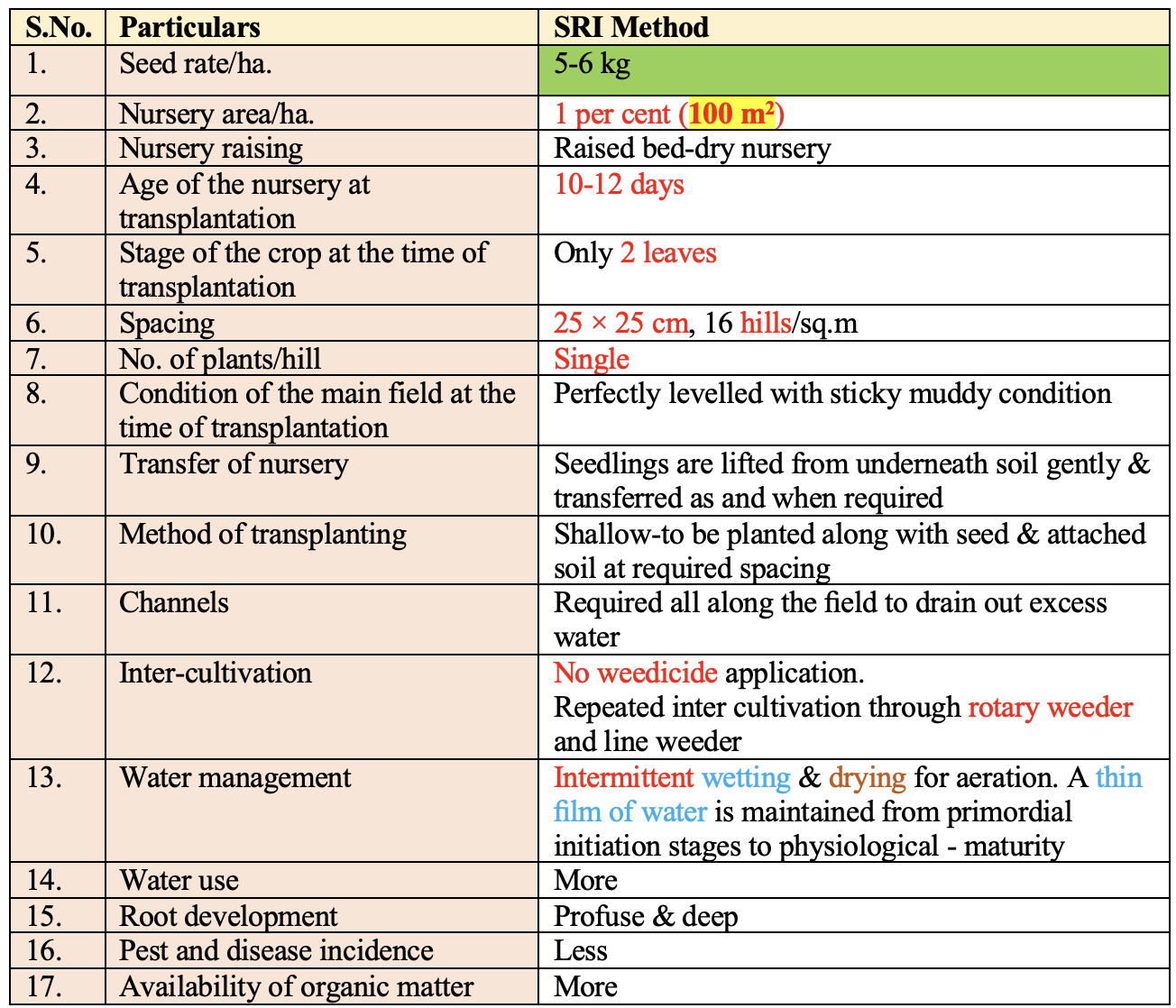
Basics

- Botanical name:
Oryza sativaAFO 2021 - Family:
Poaceae(Gramineae) - Rice is the
most important crop of India, occupies23.3per cent of gross cropped area of the country. - Rice contributes
43 per centof total food grain production and 46 per cent of total cereal production. - Only
10%rice is grown out of Asia.
Rice Growing Regions
- North-Eastern Region: Assam and North eastern states.
- Eastern Region: Bihar, Chhattisgarh, Madhya Pradesh, Orissa, Eastern UP and WB
- Northern Region: Haryana, Punjab, Western Uttar Pradesh, Uttrakhand, HP and J & K.
- Western Region: Rajasthan, Gujarat and Maharashtra.
- Southern Region: Andhra Pradesh, Karnataka, Kerala and Tamil Nadu.
World
- Area:
India(43.19 million ha 2016-17) > China > Indonesia - Production:
China (28%)>India (21.65%) …
Become Successful With AgriDots
Learn the essential skills for getting a seat in the Exam with
🦄 You are a pro member!
Only use this page if purchasing a gift or enterprise account
Plan
- Unlimited access to PRO courses
- Quizzes with hand-picked meme prizes
- Invite to private Discord chat
- Free Sticker emailed
Lifetime
- All PRO-tier benefits
- Single payment, lifetime access
- 4,200 bonus xp points
- Next Level
T-shirt shipped worldwide

Yo! You just found a 20% discount using 👉 EASTEREGG

High-quality fitted cotton shirt produced by Next Level Apparel